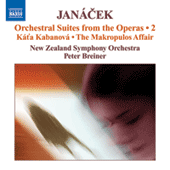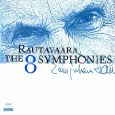Chopin is remembered today as probably the finest composer
for the piano, but in his lifetime it was equally his unique skills as a
pianist that captivated audiences.
It was Liszt that had enthralled audiences throughout Europe
with playing that was described as causing ‘…terrified pianos flee into every
corner…gutted instruments strew the stage…’
So at Chopin’s Vienna debut at the Karntnertor Theatre,
although he received an enthusiastic reception, there was criticism that his
playing ‘… lacked vigour and volume…’.
Chopin himself accepted that his playing was ‘…too delicate
for those accustomed to the piano bashing of local artists…’ It had been Liszt
that had popularised a kind of virtuosity that was far from delicate.
Yet for all of Liszt’s virtuosity, Chopin was also described
as ‘…so very masterly in his piano playing that he may be called a really
perfect virtuoso.’
A friend and pupil, Ernest Legouve, shows the effect of
Chopin’s playing on his listeners, ‘Those who have heard Chopin may say that
nothing approaching it has ever been heard. What virtuosity! What power! Yes.
What power! But it only lasted a few bars; and what exaltation and inspiration!
The whole man’s being vibrated. The piano was animated by the intensest life:
it sent a thrill through you.’
There perhaps lies the answer to Chopin’s brand of
virtuosity ‘…power…but only lasting a few bars...’
He may have been a quieter player but as another pupil,
Karol Mikuli remembers ‘…the tone which Chopin drew from the instrument,
especially in cantabile passages, was immense…(the) energy given to appropriate
passages an overpowering effect, energy without coarseness; but, on the other
hand, he knew how to enchant the listener by delicacy, without affectation…’ Virtuosity doesn’t necessarily need volume.
Writing to his parents from Vienna in 1829 he said,’ I
expect that criticism to be made in the papers, particularly as the editor’s
daughter enjoys nothing like a good thump at her piano…’
His Paris debut in 1832 at the Salle Pleyel, was another
triumph, but the concert appears to have been strange to say the least, with
Beethoven’s Quintet Op. 29 played by the best musicians the city had to offer,
some arias and a performance of Kalkbrenner’s Polonaise for six pianos played
by the composer himself with Chopin, Hiller, Sowinski, Osborne and Stamaty. Mendelssohn
had the good sense to drop out at the last minute. Chopin played his E minor concerto which received
an enthusiastic response, with Liszt, who was in the audience, applauding
furiously.
The Revue Musicale reported that ‘…an abundance of original
ideas of a kind to be found nowhere else…’
A later concert in the Paris Conservatoire was more
problematic as again his style of playing caused difficulties. He had played
the first movement of his E minor concerto with ‘the best orchestra in Europe’
but his soft playing was drowned by it.
He told Liszt ‘…I am not fit to give concerts, the crowd
intimidates me and I feel asphyxiated by its eager breath…silenced by its alien
faces…but you, you are made for it, for when you cannot captivate your
audience, you at least have the power to stun it.’
Chopin’s playing developed with time and he achieved a
distinctive reputation and by 1833 he was considered the brightest musical star
in Paris. It was his uniqueness that had achieved this, with a style like no
one else.
Charles Halle heard him in Paris ‘…I sat entranced, filled
with wonderment and if the room has suddenly been peopled with fairies I should
not have been astonished…the marvellous charm, the poetry and originality, the
perfect freedom and absolute lucidity of Chopin’s playing at that time cannot
be described. It was perfection in every sense…’
It was also said that ‘…his delicate and slender hands cover
wide stretches and skip with fabulous lightness.’ He could play rapid trills and legato like no
one else producing the effect of strings of pearls or, as Hiller put it ‘…the
flight of a swallow…’
Chopin had a distinctive touch; he could play the same note
in various ways producing a variety of nuances. These nuances would be
heightened by his use of the sustaining pedal and perhaps more importantly by
his use of tempo rubato. This is where the art of Chopin playing is most
important ‘…his left hand would keep strict time whilst his right had the
freedom to give the melody.’ It is said that his right hand would just hint at
the anticipation of a phrase or reluctance to begin it.
He told his pupils ‘..Let your left hand be your conductor
and keep strict time.’
Hiller recalled ‘Rhythmic precision in his case was linked
with a freedom in his leading of a melody, which gave the impression of
improvisation.’
With an expression of deep thought, Chopin always gave the
impression that what he was playing was a spontaneous creation. ‘The whole man
seemed to vibrate, while under his fingers he piano came to life with its own
intensity’, wrote another pianist.
And of a performance of his A♭and F
minor etudes Op.25 ‘…let one imagine that an Aeolian harp had all the scales
and that an artist’s hands had mingled them together in all kinds of
fantastic decorations, but in such a way
that you could always hear a deeper fundamental tone and a softly singing
melody – there you have something of a picture of his playing…it is wrong to
suppose that he brought out distinctly every one of the little notes, it was
rather a billowing of the chord of A♭,
swelled here and there by the pedal; but through the harmonies could be heard
in sustained tones a wonderful melody, and only in the middle section did a
tenor part once stand out more prominently from the chords and the principle
theme. When the study has ended you feel as you do after a blissful vision,
seen in a dream, which, already half awake, you would fain recall…and then he
played the second, in F minor…so charming, dreamy and soft, just as if a child
were singing in its sleep…’
Chopin was careful in his manuscripts to make his intentions
clear regarding the use of the pedal, however, his publishers weren’t so
careful and, in many cases, the engraver took no notice whatsoever of what the
composer had written and used his own ‘judgment’ when placing pedal markings
over the printed copies.
It has been generally accepted, even until recently, that
original editions of Chopin's works contained errors and inaccuracies, which to
a large extent deformed the composer's intentions. Studies also revealed
numerous discrepancies between French, English and German editions.
The late 20th century has seen an editorial tendency for
editors to base their work mostly on manuscripts and original editions, i.e.
the most authoritative sources, reducing the subjective intervention of the
editor to a minimum. The evolution of
the piano as an instrument has of course, to an extent, influenced later
editions of Chopin's works.
So how do pianists measure up to playing Chopin today? Well
I for one would not like to have only one or two recordings of his works as
there is no way that a single pianist can bring to a performance every aspect
of Chopin’s music.
I must briefly mention that Sony Classical www.sonymasterworks.com have recently re-issued Murray Perahia’s Chopin recordings in a five CD box set.
 |
| 88697648232 |
These fabulous recordings show a master pianist at work.
Just listen to the disc containing the Op.10 and Op.25 Etudes to hear such
commanding fluency, and poetry. There are probing performances of Sonatas 2 and
3 and the four Ballades are played with freshness and passion. There is only
one Nocturne included, the Nocturne in F Op.15, and, such is its exquisitely
paced beauty that I can only hope Perahia records the whole set one day.
This is a set that no Chopin lover will wish to be without
and it comes at a low price that makes it irresistible.
A new issue this month comes from Nimbus Alliance www.wyastone.co.uk and features Vladimir
Feltsman playing Chopin’s complete Waltzes and Impromptus. Let me say from
the outset that this is quite remarkable Chopin playing from an artist that has
received far too little attention.
 |
| NI6184 |
I had, of course, heard much about Feltsman before but had
not heard him play, so I was keen to hear this new CD.
These are wonderful performances of the waltzes. Just take the
A minor Op.34 No.2 where Feltsman brings an extraordinary poetry to the music
followed by the F major Op.34 No.3 where there is quicksilver playing
interspersed by a rhythmic quality that brings to mind that description of
Chopin’s playing mentioned above ‘…his right hand would just hint at the
anticipation of a phrase or reluctance to begin it.’
Elsewhere there is a feeling of freedom and spontaneity such
as the C# minor Op.64. No.2, which is simply entrancing and played with such
fluency.
In the Impromptus there is again that feeling of anticipation
in the beautiful phrasing of his playing. Impromptu No. 2 in F# major op.36 in particular,
has a captivating quality with playing of such limpid fluency and poetic
feeling.
The recording in the Fisher Performing Arts Centre at Bard
College, New York has an intimate sound well suited to the performances. The
notes by Vladimir Feltsman himself are extremely perceptive and informative. By
now you will have gathered that this is a special Chopin disc which I
thoroughly recommend to all.
Feltsman has already recorded two other Chopin discs for
Nimbus that include the complete Nocturnes and the four Ballades. Can we hope
that they will continue with a complete Chopin cycle?

























